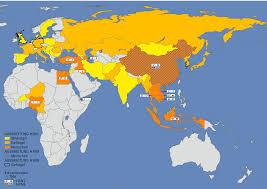Understanding H5N1 Avian Influenza and Its Impact

Introduction to H5N1
The H5N1 virus, a subtype of the Influenza A virus, primarily affects birds but poses significant risks to human health. Since its discovery in the late 1990s, H5N1 has raised alarms due to its potential to cause severe respiratory illness in humans. With recent outbreaks reported globally, understanding this virus has become increasingly important for public health officials, virologists, and the general population.
Recent Outbreaks and Developments
In 2023, various countries, including Vietnam and Egypt, reported new cases of H5N1 among domestic poultry and wild birds. These outbreaks serve as reminders of the ongoing threat posed by this virus. Bird flu transmission between birds is common, but the concern escalates when there are reported cases of transmission to humans. As of now, the World Health Organization (WHO) records a few sporadic human cases each year, which raises public health concerns and calls for enhanced surveillance.
In February 2023, a case in China drew attention as it marked a rare instance of human transmission, raising fears of mutation or adaptation of the virus, which could lead to a potential pandemic. Reports indicate that the infected person had close contact with infected poultry, highlighting the relationship between animal and human health. Public health experts have urged for increased biosecurity measures in poultry farms to prevent spillover events.
Public Health Responses
The global response to H5N1 has involved various measures, including vaccination of poultry, public communication on hygiene practices, and monitoring of wild bird populations. In many countries, vaccination programmes for poultry have been successful in controlling outbreaks. The CDC continues to emphasise the importance of biosecurity practices among poultry workers and the need for immediate reporting of unusual mortality in birds.
Furthermore, existing surveillance systems are essential for early detection and response to H5N1 cases in both avian and human populations. Health organisations are also exploring the potential of avian influenza vaccines for humans, which may provide better protection against H5N1 and other strains.
Conclusion
H5N1 remains a critical public health challenge with the potential for serious implications for both animal and human health. Continued vigilance, public awareness, and investment in prevention strategies are vital in reducing risks associated with this virus. While the immediate threat to human health remains low with proper control measures, ongoing surveillance and research are imperative to better understand H5N1 and its potential to evolve. As we continue to monitor this situation closely, it is crucial for individuals to remain informed and prepared.
